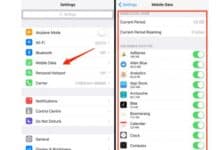Common Types of Hacks in Cybersecurity (2022)

Types of Hacks- Recent technological advancements have resulted in numerous improvements to meet the needs of modern enterprises and users.
How we used to work and live has been altered by technology, tools, and internet-based businesses and services. They have made our lives easier and more convenient in every way, whether in business or at home.
Technology, on the other hand, has raised a slew of issues and cybersecurity dangers that threaten to disrupt both realms of our life.
Businesses have lost millions of dollars, as well as customer trust and industry image. Individuals have also been terrorized as a result of leaked personal data, which has resulted in crimes and threats.
Because hackers are also trained professionals, their hacking techniques are evolving. Some criminals utilize their expertise to commit crimes, while others are employed by businesses to battle bad hackers.
And, if you want to protect yourself and your company from hacks and hackers, you need to be aware of what is going on in the cybersecurity field as well as the different sorts of cyberattacks and hackers.
This article will teach you how to recognize the many sorts of hacks as well as hackers, as well as how to adopt the proper security measures to stay safe.
What Is a Hack?
A hack is an action taken by a person or group of people to undermine an organization’s security by getting access to information, networks, systems, as well as applications and launching assaults. Misuse of gadgets and systems may wreak havoc on a company’s finances as well as reputation.
A hack begins with a system that is used by a hacker with extensive computer software and hardware and coding expertise.
Hackers use subtle tactics to perform attacks in modern hacks, that are aimed to avoid the attention of IT teams as well as cybersecurity software teams. They can persuade users to open malicious links as well as attachments, revealing critical information in the process.
Virus as well as malicious code deployment, man-in-the-middle attacks, DDoS, DoS, phishing, ransomware, as well as other hacks are examples of hacks.
Types of Hacks
Phishing
Phishing is a type of email scam in which fraudsters attempt to steal your identity and money. Hackers force you to provide personal information such as bank account numbers, passwords, and credit card numbers.
The attacker sends a user an email that contains deceptive words that appear to be genuine. They appear as an interviewer, bank manager, service associate, as well as other people you can trust. To make the hack effective, it combines existing methods such as code injection, network attacks, as well as malware.
Email phishing, spear phishing, whaling, smising, vishing, as well as angler phishing are all examples of phishing assaults.
DoS and DDoS
A Denial of Service (DoS) attack targets a network or machine in order to shut it down and prevent end-users from accessing it.
Cyberattackers disable a device’s operation by flooding the network / system with unlimited requests, preventing normal traffic from reaching it.
There are two types of DoS:
Buffer Overflow attacks: This attack takes CPU time, hard disc space, as well as memory, crashing the system and affecting server functionality.
Flood attacks: This type of attack bombards servers with a large number of data packets. The attacker overloads the server’s capacity, leading to a DoS attack. To be successful, a DoS flood attack requires the attacker to have greater bandwidth than the target machine.
The traffic flooding in a DDoS attack comes from a variety of places. Because you can’t shut down multiple sources at once, this assault is more dangerous than DoS.
Switch and Bait
Bait and switch is a scam where scammers exploit reputable adverts and outlets to obtain personal information and login credentials. They deceive consumers into visiting dangerous websites and steal all of their personal information right in front of their eyes.
The majority of these attacks stem from the advertisements sold by websites. After purchasing advertising space, the attackers instantly update the ad with a malicious link, locking the browser as well as compromising systems.
The main avenue for attacks when people are fooled into opening links that later turn out to be dangerous is through internet-based content marketing.
Theft of Cookies
Cookie theft is a sort of data theft in which an attacker gains access to a user’s personal information. A third party copies the unsecured session data and impersonates the user as a result. It usually happens when a user uses public Wi-Fi or an unprotected network to access trustworthy websites.
The attacker can then use the information or account to send fraudulent messages, transfer money, or carry out other nefarious activities.
It can be avoided if a person logs in using SSL connections and avoids accessing websites using unsecured networks.
Virus, trojan and Malware
A computer virus is a program that links to another computer or software application in order to cause harm to the system. Hackers introduce code into a program and wait for it to be executed. They infect other apps on a computer this way.
A trojan runs a program that claims to be safe and useful. In actuality, it acts maliciously in the same way that the Greeks employed Trojan Horses to attack adversaries at night.
Instead of attacking a software system, the Trojan focuses on infecting the system with additional malware, deceiving users.
A worm is a type of malware that is comparable to a virus. It sends out a harmful payload and copies itself on computers. The only variation is in their method of spreading.
A virus needs a host program to survive in, but a worm lives in its own software. They can sometimes spread on their own, without the intervention of humans.
There is also a range of other dangerous threats, including ransomware, adware, spyware, rootkits, and bots, as well as many others.
ClickJacking Attacks
Clickjacking, also termed a UI redress attack, deceives users by tricking them through numerous opaque or transparent layers. When a user clicks on a button or link without noticing it is the false one, their information falls into the wrong hands.
Assume you’re on a website & scrolling down to see what’s on the next page. When you go to click on a link, you may notice that other ads appear that allow you to click on that link. As a result, the attackers redirect you to some other page. This is how ClickJacking criminals operate.
Fake WAP
WAP (Wireless Access Point) is a technology for connecting multiple users at once via a public channel. Fake WAP entails mimicking the technique in order to achieve the same result.
A hacker will typically choose a public location with free Wi-Fi, such as an airport, shopping mall, or neighborhood coffee shop.
They sometimes set up Wi-Fi for the users, giving them unrestricted access and allowing them to play like ninjas. In this instance, you freely reveal all of your personal information while signing up for a Wi-Fi account or visiting other famous websites. They can also access your Facebook, Instagram, Twitter, as well as other social media accounts this way.
Keylogger
A keylogger, also known as a keyboard capture or keystroke logger, is a method of recording all keystrokes on a device or computer. You can also use it on your smartphone using its software.
A keylogger is frequently used by hackers to acquire login credentials, critical company data, and other information. It’s essentially software that keeps track of everything you do, even mouse clicks. Hardware keyloggers are devices that are installed between the CPU as well as the keyboard and provide a variety of options for capturing information.
This method is used by hackers to gain access to your account information, pin codes, email addresses, passwords, and other personal information.
Eavesdropping
Eavesdropping is an old security issue in which an attacker listens carefully to network connections in order to obtain personal data like routing changes, application data, node identifying numbers, and so on.
The data is used by the hacker to affect routing, application performance, as well as networking via compromising nodes. Email, cellphone networks, and telephone lines are among its vectors.
Waterhole Attacks
A waterhole attack is a type of cyber attack in which a hacker observes or guesses the websites that a company or individual frequently visits. Attackers then use malware to infect those websites, resulting in some members becoming infected as a result of the attack.
This method is more difficult to detect since hackers hunt for a specific IP address to attack and obtain specific data. The goal is to target the user’s computer and acquire access to the targeted websites.
SQL Injection
SQL injection (SQLi) is a database manipulation attack in which an attacker injects malicious code into the database. They can gain access to information that is kept secure in an organization’s database this way. They obstruct application inquiries for viewing data, such as user data, corporate data, and so on.
They can either delete or modify data once they gain access, creating changes in an application’s behaviour. In other circumstances, the hacker gets administrative access, which can be extremely damaging to a company.
SQLi is a web application that targets SQL databases such as Oracle, SQL Server, and MySQL, as well as others. This is the oldest and most serious attack, as it allows hackers to gain access to a firm’s trade secrets, personal information, and intellectual property if it is successful.
Brute Force Attacks
A brute force attack is a simple hacking strategy that relies on trial – and – error to crack passcodes, encryption keys, login credentials, as well as other sensitive information. Attackers go over all of the conceivable scenarios in order to find the right one.
Brute force refers to a hacker’s use of forceful attempts to gain access to private accounts. This is an ancient attack method, yet it is still useful and successful among hackers. Hackers profit from advertisements, steal personal information, spread malware, hijack your machine for malevolent purposes, and more.
In order to acquire access, attackers use a variety of brute force techniques. Simple brute force assaults, dictionary attacks, hybrid brute force attacks, reverse brute force attacks, as well as credential stuffing are some of the techniques used.
Spoofing DNS (DNS Cache Poisoning)
An attacker is using alternate DNS records to reroute traffic to a malicious website in this case.
For instance, suppose you’re fresh to college and your seniors decide to modify the classroom numbers. As a result, you find yourself in the incorrect classroom. This will continue until you obtain the proper campus directory.
DNS spoofing operates in a similar manner. The hacker injects fake data into the cache, causing DNS queries to return inaccurate results, and causing you to visit the wrong domains. This attack is the result of a deceitful cyber attack.
Password Cracking
Hackers gain access to login information by cracking passwords. A password cracking particular style as a brute force attack.
Conclusion
Knowing about various hacks will put you up to date on current cybersecurity threats. It will also assist you in distinguishing between hackers and bad actors. As a result, you can take appropriate security steps at the appropriate moment to avoid attacks and reduce risks.






